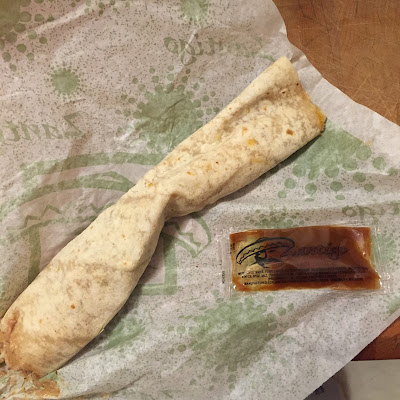"Finns det några snälla barn här?"
Every Christmas Eve tomte, a
troll-like mini-Santa, visits homes across Sweden and asks “Are there any good
children here?” If the answer is “Yes!” tomte
parcels out gifts. In return, families leave a bowl of rice pudding outside for
tomte and if the bowl is empty on
Christmas morning, good luck will reign all year.
On his Christmas trek tomte
is often accompanied by a goat. Jul goats predate Christianity. Their pagan
hooves trotted across northern Europe and Scandinavia and were befriended by
everyone from Thor to modern tomte. Early goats were tricksters
demanding treats. Contemporary goats carry tomte and his gifts to good children on Christmas Eve, although it isn't clear to me
whether the goat partakes in tomte's
rice pudding reward.
Goats not lucky enough to pal around with tomte can be found lounging under Christmas trees, observing as families prepare their homes for the holidays. I don't know what the goat does if the family fails to construct a flawless celebration, and I don't want to find out. There are currently three Jul goats in our house, waiting and watching (a slightly less disturbing version of Elf on the Shelf).
Goats not lucky enough to pal around with tomte can be found lounging under Christmas trees, observing as families prepare their homes for the holidays. I don't know what the goat does if the family fails to construct a flawless celebration, and I don't want to find out. There are currently three Jul goats in our house, waiting and watching (a slightly less disturbing version of Elf on the Shelf).
Barley pudding is rice pudding's ultra-hip
grandmother. Rice was not widely available to impoverished Swedes until
the late nineteenth century. Barley pudding was typical fare on Christmas
and for other important celebrations. As rice became popular among lower
classes, it replaced barley.
Rice pudding lore includes a prophetic feature. A
variety of items are baked into the dish. Bite into an almond and you are
to be married, but bite into a butter almond and you'll become a
spinster. Bite into a brown bean and marry a widower or widow. Discover a
silver coin and expect wealth (hopefully you won't lose a tooth in the
bargain!). Modern Swedes set a bowl of rice pudding outside on Christmas
Eve for the tomte as thanks for his protection of the house and
family. An empty bowl in on Christmas morning predicts peace and
prosperity for the coming year.
Barley-Coconut Pudding
Serves 8
1 cup barley*
2 x 14 ounce cans coconut milk or cream
1/3 cup dried cranberries or raisins
1/3 cup diced dried mango, pineapple, or pear
Juice and zest from 1 small lime
Vanilla bean, halved and seeded
1 cinnamon stick
2 tablespoons brown sugar
1 teaspoon each ginger and fresh ground cardamom
Pinch of salt
Up to 1 cup of additional coconut milk, half-n-half, or pineapple juice
Serves 8
1 cup barley*
2 x 14 ounce cans coconut milk or cream
1/3 cup dried cranberries or raisins
1/3 cup diced dried mango, pineapple, or pear
Juice and zest from 1 small lime
Vanilla bean, halved and seeded
1 cinnamon stick
2 tablespoons brown sugar
1 teaspoon each ginger and fresh ground cardamom
Pinch of salt
Up to 1 cup of additional coconut milk, half-n-half, or pineapple juice
Optional garnish: toasted grated coconut and nutmeg
In wire mesh colander rinse raw barley with cold water until the water runs clear. Place barley in large pot and cover with 6 cups of water. Bring to boil and simmer, covered, 15 minutes.
Drain barley and return it to pot. Add coconut milk, dried fruit, lime juice, vanilla bean, cinnamon stick, sugar, ginger, cardamom, and salt. Bring to simmer and then cover and cook on low until barley is tender and milk thickened, about 30 – 40 minutes; stirring occasionally.
Remove cover during final 10 minutes of cook time and add coconut milk, half–n-half or pineapple juice if pudding becomes dry. Remove vanilla bean and cinnamon stick. Garnish with lime zest, toasted grated coconut, and nutmeg.
*Note: some barley may take up to 1 hour and 15 minutes to cook. Add additional cooking time to first boil accordingly.
In wire mesh colander rinse raw barley with cold water until the water runs clear. Place barley in large pot and cover with 6 cups of water. Bring to boil and simmer, covered, 15 minutes.
Drain barley and return it to pot. Add coconut milk, dried fruit, lime juice, vanilla bean, cinnamon stick, sugar, ginger, cardamom, and salt. Bring to simmer and then cover and cook on low until barley is tender and milk thickened, about 30 – 40 minutes; stirring occasionally.
Remove cover during final 10 minutes of cook time and add coconut milk, half–n-half or pineapple juice if pudding becomes dry. Remove vanilla bean and cinnamon stick. Garnish with lime zest, toasted grated coconut, and nutmeg.
*Note: some barley may take up to 1 hour and 15 minutes to cook. Add additional cooking time to first boil accordingly.



Comments